At the Sotheby’s auction in New York of the Ralph and Lois Stone Collection on May 21, 2018, CAC-approved Morgan silver dollars brought brought substantial premiums over silver dollars of same date, type and certified grade sold last month or earlier this year. As some coins in this collection were certified long ago, recent auction results for recently encapsulated, CAC-approved silver dollars of the same respective dates are cited in several cases to illustrate that the mentioned results in this auction are consistent with pertinent auction prices earlier in 2018. Regardless of when coins are graded and encapsulated, CAC-approved coins tend to realize higher prices at auction than their non-CAC counterparts.
Here are 10 examples among many that could be listed:

1. The sale by Sotheby’s of a CAC-approved MS-66 1882 dollar for $2,000 is further evidence that CAC-stickered 1882 dollars bring substantial premiums over their non-CAC counterparts. In April, another CAC-stickered MS-66 1882 realized $1,334.40. Non-CAC-certified MS-66 1882 silver dollars usually bring less than $2,000 at auction, including including $1,840 at a Heritage auction in April; $960 at a Heritage auction in March 2018; and $840 in a Stack’s Bowers sale that closed on March 28, 2018. All the 1882 dollars just mentioned were encapsulated by the same grading service.
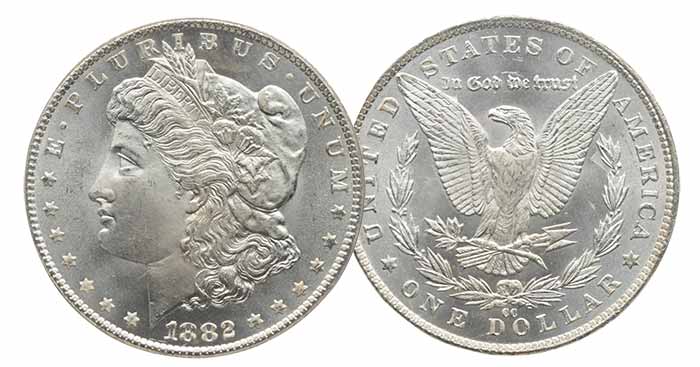
2. The price realized of $15,000 for a CAC-approved MS-67 1882-CC silver dollar in this Sotheby’s event is not the only piece of evidence that indicates a substantial CAC premium for a MS-67 1882-CC dollar. On May 17, Legend auctioned both a CAC approved MS-67 1882-CC and a non-CAC certified MS-67 1882-CC dollar. The CAC-approved coin brought $9,106.25, while the non-CAC 1882-CC realized $5,170 in that Legend auction.
lso, at the Long Beach Expo in February 2018, Heritage auctioned two MS-67 1882-CC Morgan dollars, without CAC stickers, each for $6,600.
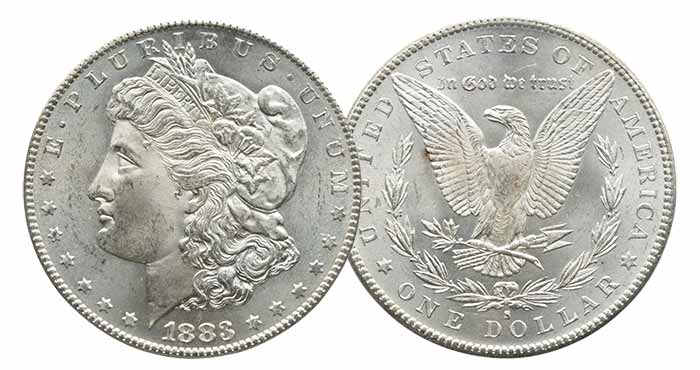
3. The $50,000 price realized for a CAC-approved MS-65 1883-S in this Sotheby’s auction may be indicative of a current CAC premium rather than a speculative price for a coin that may be upgraded. In 2015, Legend auctioned two certified MS-65 1883-S silver dollars; the CAC-approved 1883-S then realized $52,875 while the non-CAC “MS 65” 1883-S brought $29,375. In June 2014, the Goldbergs auctioned a non-CAC “MS-65” 1883-S for $36,425.
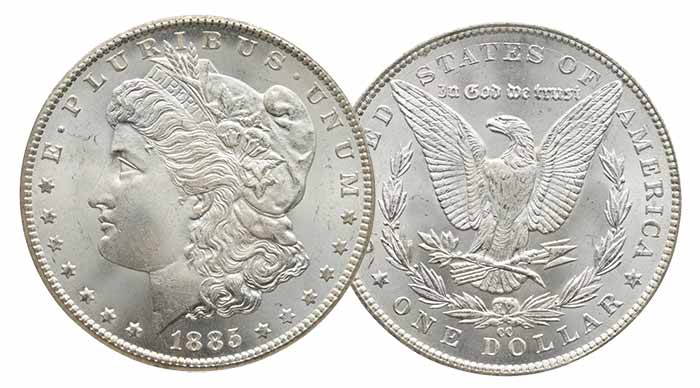
4. There were two CAC-approved MS-67 1885-CC dollars in this Sotheby’s auction. One brought $17,500 and the other realized $15,000. Several “MS-67” 1885-CC Morgan dollars, without CAC stickers, have been publicly sold during the last three months: for $8,225 by Legend on May 17; for $9,000 by Heritage at the Central States Convention in April; for $8,500 by DLRC on April 15, and for $6,600 by Stack’s Bowers on March 28. All these were encapsulated by the same grading service.
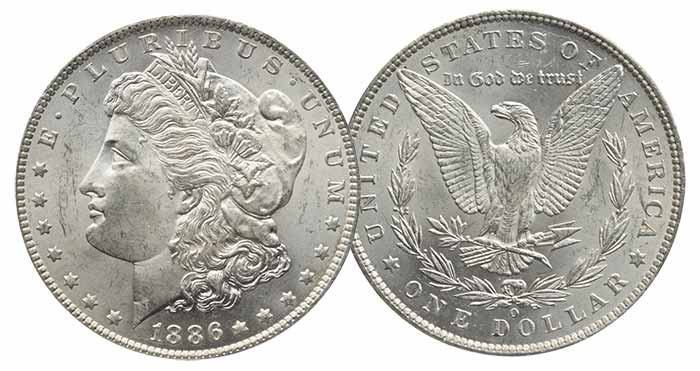
5. In this Sotheby’s auction, a CAC-approved MS-64 1886-O realized $15,000. In 2018, non-CAC “MS-64” 1886-O dollars have realized considerably less; $9,987.50 in a Legend auction on May 17, $7,800 in a Heritage auction in late March, and $7,800 also for a coin in the auction held at the Long Beach Expo in February.
In 2017, a “MS-64” 1886-O Morgans, without a CAC sticker, was auctioned for $8,812.50 by Heritage in April and another for the same price, $8,812.50, by Stack’s Bowers in March. At the FUN Convention in January 2017, Heritage auctioned four “MS-64” 1886-O dollars. The one with a CAC sticker brought $10,575. The other three realized $8,225, $8,812.50 and $7,637.50 respectively.
So, since January 2017, the only “MS-64” 1886-O dollars to sell at auction for more than $10,000 had CAC stickers, and seven non-CAC coins realized less than $8,250 each!
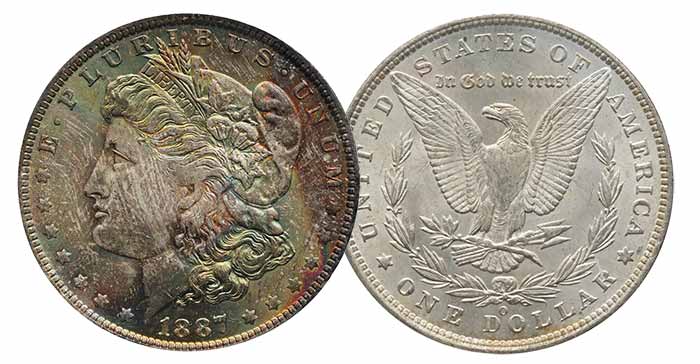
6. In this Sotheby’s auction, a CAC-approved MS-64 1887/6-O silver dollar brought $7,500. This is not an anomaly, as, four days earlier, another CAC-approved MS-64 1887/6-O silver dollar brought $7,050 in an auction in New Orleans. In March 2018, Stack’s Bowers auctioned a third CAC-approved MS-64 1887/6-O silver dollar for $6,600.
In contrast, Heritage auctioned non-CAC “MS-64” 1887/6-O silver dollars on March 31 for $5,701.20, on January 8 for $2,880, and on November 4, 2017, for $2,520. Also, the Goldbergs auctioned another non-CAC, certified MS-64 1887/6-O for $3055 on February 19, 2018. All the 1887/6-O dollars mentioned above were encapsulated by the same grading service.
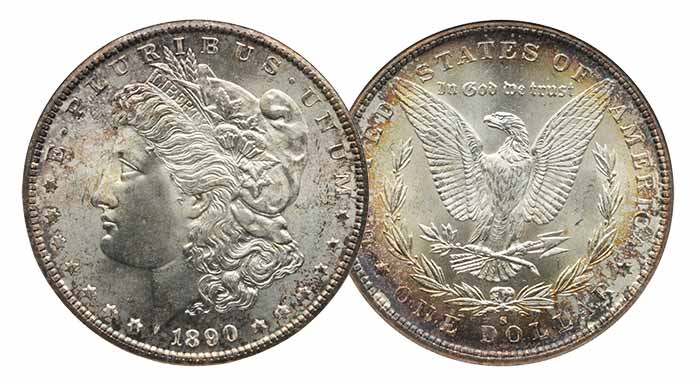
7. In this Sotheby’s auction, a CAC-approved, NGC-graded MS-66 1890-S silver dollar realized $3,250. In a Heritage auction in April, a CAC-approved PCGS-graded MS-66 1890-S silver dollar realized $2,640. In that same auction in April, a non-CAC, PCGS-graded MS-66 1890-S silver dollar realized $2,160. In March, Stack’s Bowers auctioned a CAC-approved PCGS-graded MS-66 1890-S silver dollar for $3,120, a result which suggests that the just mentioned result in the recent Sotheby’s auction was not an outlier. Less than a month later, Stack’s Bowers sold a non-CAC PCGS-graded MS-66 1890-S silver dollar for $2,220, so the CAC-approved coin brought more than 40% more.
Also, on February 26, 2018, Heritage sold two non-CAC, PCGS-graded MS-66 1890-S silver dollars, one for $1,818 and and the other for $1,680. These results are dramatically lower than the results for the just mentioned CAC coins.

8. In this Sotheby’s auction, a CAC-approved, NGC-graded MS-65 1891 silver dollar realized $6,000. Four days earlier, Legend auctioned a CAC-approved, PCGS-graded MS-65 1891 silver dollar for $4,112.50. On March 31, Heritage sold three non-CAC, PCGS-graded MS-65 1891 dollars for $1,728, $2,160 and $2,880, respectively. On February 26, 2018, Heritage sold another non-CAC, PCGS-graded MS-65 1891 dollar, for $2,400 and a non-CAC, NGC-graded MS-65 1891 for $3,000.
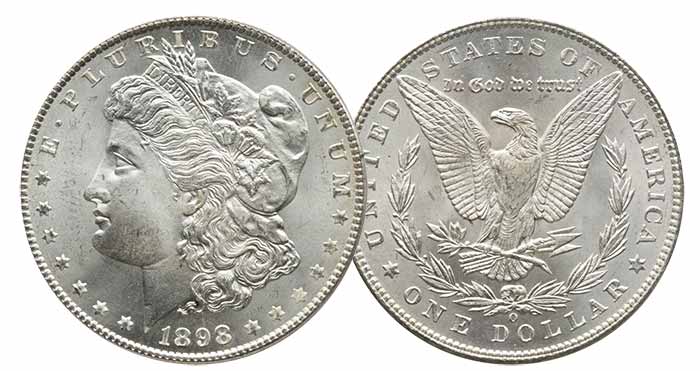
9. In this Sotheby’s auction, a CAC-approved, MS-67 1898-O silver dollar realized $2,250. GreatCollections sold another CAC approved, MS-67 1898-O for $,2081.25 on January 28, 2018. In contrast, GreatCollections sold non-CAC, PCGS-graded MS-67 1898-O silver dollars for $1,243.12 on April 29 and for $1,350 on March 25, 2018. At the FUN Convention in January, Heritage auctioned three PCGS-graded MS-67 1898-O dollars, without CAC stickers, for $1,320, $1,320 again, and $1,080, respectively.

10. In this Sotheby’s auction, a CAC-approved, MS-65 1901-S silver dollar realized $2,500. As a reference, in January 2017, a CAC-approved “MS-65+” 1901-S realized $5,170 in the same auction that a PCGS-graded “MS-65+” 1901-S, without a CAC sticker, realized $2,585. Experts at CAC ignore the plus aspect of plus grades assigned at PCGS and NGC.
There is much data available to illustrate that recent auction premiums for CAC 1901-S dollars are part of a trend. GreatCollections sold a CAC-approved MS-65 1901-S, also in a very old holder, for $4,078.12 on February 25, 2018. On February 26, Heritage auctioned a PCGS-graded MS-65 1901-S, without a CAC sticker, for $1,560 and another non-CAC 1901-S realized this exact same price in a Heritage event on January 8. On February 4, GreatCollections sold a non-CAC “MS-65” 1901-S for $1,913.62.
So, the $2,500 price realized on May 21, 2018 is likely to be indicative of a CAC premium for a 1901-S that is certified as grading 65, and not a price connected with a potential for an upgrade. The certified 65 grade 1901-S dollars with CAC stickers have consistently realized substantially more at auction than the certified 65 1901-S dollar without CAC stickers.




